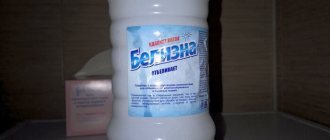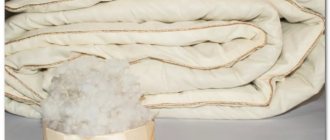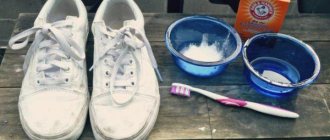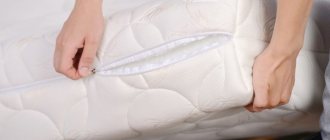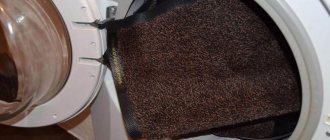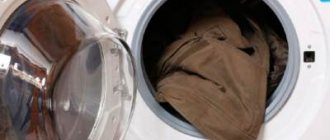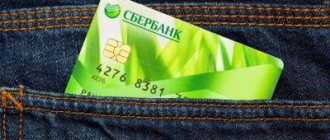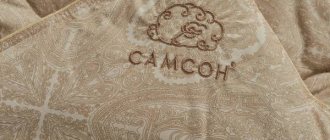Fjallraven Kanken backpacks are stylish and fashionable products that are convenient to go to school, college, work and sports training. It is not surprising that during such active use the product quickly gets dirty.
To keep your backpack clean, it must be cleaned and washed properly. Illiterate actions can cause damage to a branded bag.
In this article we will tell you whether and how to properly wash a Kanken backpack (Fjallraven Kanken) by hand and in an automatic washing machine.
Is it possible to machine wash a leatherette backpack?
To a large extent, it all depends on the material from which the product is made. If it is high-quality leatherette, you can risk washing it in a machine on the shortest delicate cycle. make sure that the water temperature does not exceed 30°C; Choose a delicate or hand wash program.
Interesting materials:
What is an electronic signature key? What is a key in programming? What is the bank's key rate? What is the central bank's key rate in plain English? What is the Goskomstat code? What is a department code in public services? What is the Rka code? What is the growth rate? What is a coefficient in 6th grade math? What is coenzyme q10?
Can it be done in the washing machine or by hand?
The Kanken backpack can only be cleaned by hand. Machine washable. Failure to follow this recommendation will result in damage to the product.
If you put it in an automatic wash, the fabric will wrinkle and fade . As a result, even a new bag will look as if it has been actively used for several decades.
Organic-based dyes are used to give color to Kanken backpacks. They react sharply to aggressive detergents, including washing powders. Therefore, machine washing of such products is contraindicated.
In addition, the fabric will not tolerate active rotation of the drum and friction against its walls. After such a test, scuffs will definitely appear on the backpack. The Kanken backpack can only be washed by hand.
What to look for?
Of course, you can distinguish a genuine thing from an imitation only by paying attention to certain signs and characteristics.
You can recognize a fake by the following nuances:
- Material.
- Lightning.
- Manufacturer's logo.
- Product passport (“name tag”).
- Lining.
- Label.
There is no point in listing the characteristics of counterfeit items, since they are constantly changing. When purchasing, you should be wary of the difference between the description of the original characteristics and those of the proposed item.
Label
This label is printed on craft paper and feels indistinguishable from the paper sheets sold at craft stores.
The original label consists of three separate paper tags that differentiate the size and content. On one of the labels the information is presented in Vietnamese, on the other, decorated with a crown, in English.
The middle tag is larger than the others, the content depends on the store, some cover this tag with price tags. But there is a sticker with a barcode and information about the product printed in small print; peeling off the price tag a little, you can make sure there is text underneath it.
Important Tips
In order not to spoil its appearance when caring for your backpack, you must follow the following recommendations:
Before using the product for the first time, it must be rinsed in warm water or soaked for 30-60 minutes.
This is done in order to wash off excess paint. Otherwise, there is a risk of getting your clothes dirty in the places where they come into contact with the backpack. In addition, this procedure will give the vinylon fabric truly bright colors.- The darker the color of the backpack, the more careful it should be treated when washing.
- Items must be washed when they become dirty. There are no recommendations in this regard.
- Do not try to smooth out creases and folds on the surface of the product. Some of them will come apart on their own during wear. Such stripes are a “sign of quality”. They indicate that the backpack is original and is indeed made of vinylon material.
- Sometimes after washing or during use, an unpleasant odor begins to emanate from the backpack. You can get rid of it without soaking. It is enough to put 3 small fabric bags with soda inside the product. They are worn for 3-4 days. During this time the smell should evaporate.
If stains and stripes appear on the product after washing, you can try to paint over them with a marker or felt-tip pen. Do this with dark fabrics.
Drying Features
You need to dry your Kanken bag correctly. Basic recommendations to follow:
- After washing, the product is not twisted or wrung out. The water should drain on its own.
- When liquid stops dripping from the backpack, lay it out on a cloth on a flat surface.
- The product must dry in natural conditions.
- It is forbidden to dry the item in the sun. Ultraviolet light will cause the fabric to burn out.
- Do not place the bag on heating devices or place it near heat sources.
- Hot air is prohibited.
- Your backpack will dry out faster if you leave it in a room with low humidity and good ventilation.
If you need to quickly dry a product after washing, you can use cold air from a hairdryer. Another option is to point the turned on fan at it.
Dry cleaning
You can remove dust from your backpack using a vacuum cleaner.
Guide to action:
- remove all things from the backpack and its pockets - they can get into the hose and clog it;
- Plug in the vacuum cleaner and put on the wide nozzle;
- walk over the surface of the product with a brush, do not press it hard against the fabric;
- Vacuum the product from the inside by removing the nozzle.
If there are greasy stains on things, you can sprinkle them with starch or talcum powder before cleaning, lightly pressing the powder with your palm. After 2 hours, the fabric is vacuumed.
You can get rid of a single stain with a damp cloth. Use it to gently wipe away dirt without applying significant effort.
Washing rules
To wash a Kanken bag, you must follow the following procedure:
- Dissolve neutral soap in warm water. You can use a liquid product. If the soap is bar soap, then for better dissolution it is first grated.
- Remove all items from the product and check the pockets.
- Rinse it under running water to remove dust.
- Immerse the bag in the soapy solution and press lightly.
- Use your palms to gently move over the contaminated areas, paying attention to the handles, straps and bottom on the outside. It is these elements that get dirty more than others.
Any colorless soap or dishwashing detergent is suitable for washing Kanken backpacks. It should not contain any extraneous additives, such as herbal extracts or glycerin.
It is prohibited to treat the product with laundry soap or washing powder. The water temperature should not be higher than 30 degrees.
Cleaning compounds that are recommended for washing Kanken backpacks:
Pure Water gel for washing dishes .
The product has a unique formula that allows you to effectively combat stains even in cold water. The gel rinses off easily and quickly, leaving no stains or streaks behind. The cost of 0.45 liters of detergent is 165 rubles.- Dishwashing gel “Eared nanny” .
This product contains the minimum possible amount of surfactants. It copes well with dirt even in cold water. The gel is easily washed off and does not leave behind streaks or unpleasant odors. In addition to removing dirt, the backpack will be disinfected. The cost of 0.5 liters of gel is about 110 rubles. - Ecover. This is an ecological detergent that does not contain fragrances, aggressive substances, or synthetic fragrances. Its pH level is 8.5. The gel carefully removes dirt without harming the fabric of the Kanken backpack. The cost of 1 liter of detergent is 360 rubles.
Any composition can be purchased in large stores, in the department with household chemicals or in online markets.
If the dirt on the backpack is minor, then it can be washed without soaking. To do this proceed as follows:
- dilute detergent in a bowl of water;
- moisten a sponge in it;
- treat the surface of the backpack with a soapy mixture, distributing it as evenly as possible;
- After 5 minutes, the product is rinsed in cool water and left to dry.
The manufacturer does not recommend rubbing the product with any devices, such as brushes. This will result in pale, discolored spots.
Adviсe
Sometimes a strong-looking backpack can be ruined during normal washing, which our wardrobe items can easily, if not “happily,” endure. What are the pitfalls in this useful process?
For cleaning a leather backpack
- It cannot be washed. And do not wet the inner surface of the skin too much, otherwise it will begin to shrink, become rough and lose its attractive appearance. They just wipe it if there is such a strong need for hygienic treatment. Some wet wipes are best suited for this.
- A soft material should not be rubbed with a rough brush.
- Do not use caustic alkalis - a soap solution is often sufficient.
For cleaning a leatherette backpack
- Can't be washed. Only wet processing is possible.
- She is even more “afraid” of hard brushes and aggressive substances than bags made of genuine leather.
- After wet wiping, immediately pass over the surface with a dry rag: this does not allow excess moisture to penetrate into the material at the places of punctures from the needle and affect the uniformity of coloring of the product.
For cleaning a polyester backpack
- They can even be washed in a machine, if it is not treated with a water-repellent agent and does not have prints applied with paint - the coating cracks and the decoration loses its decorative purpose.
- The temperature is set no higher than 40 degrees. It’s better to go lower so that the color of the item doesn’t fade.
- Be sure to do a test for the presence of shedding areas and do not wash together with items of a different color or with terry inclusions.
Where are these bags made?
Fjallraven Kanken is a Swedish company. But a real “urban suitcase” from this manufacturer will not be made in Europe. Any briefcase, bag or other item decorated with the popular Swedish logo will be sewn in Vietnam. It is in this Asian country that direct production, warehouses and packaging workshops are located. Only the company's brand stores and its head office are located in Sweden. Each item of the brand is in individual, tightly “soldered” packaging. And this feature makes it very difficult to determine what is presented in the store - an original or a fake.
Lining
The original lining has one difference from the vast majority of fakes. It contains a special liner made of vinyl. As a rule, it is not counterfeited, since the presence of this liner increases the cost of the bag.
Insert - in a compartment intended for a laptop or other things that require separate placement. You can take it out, sit on it on the steps and put it back. Of course, the insert also provides protection for the laptop and acts as a frame.
Fjallraven Kanken
The popular Fjallraven Kanken backpacks today do not need advertising - the Fjallraven company has become famous all over the world solely thanks to them. Now the Kanken briefcase is the most recognizable model on the streets all over the world, and it recently celebrated its 40th anniversary. The design of the backpack is very original and laconic, thanks to which the model has a large number of fans.
The history of the Kanken backpack began in the 1970s, when Fjallraven founder Åke Nordin decided to create a backpack that was convenient and affordable for students. In those days, schoolchildren wore a lot of things to class, which had a detrimental effect on the health of their backs. The Kanken backpack evenly distributed the load, which reduced the risk of spinal curvature.
When designing the backpack that became the Kanken model, Nordin took into account such parameters as the dimensions of the largest A4-sized notebooks. And in order to take into account the wishes of the students themselves, he turned to the Association of Guides and Scouts for advice. At the beginning of 1978, the first batch of 200 Kanken backpacks saw the world and was sold out almost instantly. The company hastily produced another 200 pieces.
The very next year, the Fjallraven company experienced incredible success - the backpack model was sold in the amount of 30 thousand pieces, and every year the figure increased in phenomenal progression. By 2008, about 2 million different models of the Kanken backpack were sold all over the world, and at least 200 thousand pieces are produced annually.
The secret of the success of the Kanken backpack is that it appealed not only to schoolchildren, but also to many adults. To this day, it is widely used in sports and for city walks - it looks very stylish, moreover, it can easily accommodate all the things a modern city dweller needs - documents, thermos, lunchbox, everyday purchases. A big bonus is that the Kanken backpack is lightweight and looks very simple.
Wet cleaning with foam
For things made of coarse fabric, such cleaning will give nothing but stains. But for leather, including eco-leather, such sanitation is best suited. But it is also harmful for things made of suede, which can only be cleaned with special means.
How to use backpack foam cleaner:
- Dilute the product in a container with a small amount of water to form a thick foam. Shake the vessel frequently, so many people use a bottle of hair care product, a small plastic bottle. The narrow neck makes it easier to squeeze out the “clouds,” and the transparency of the vessel helps you understand when to stop the pressure so that liquid does not spill onto the material being processed along with the foam.
- After processing the entire fabric - only on the top, the item is wiped several times with a rag soaked in clean water.
Is a dishwasher profitable?
Oh yes! No



